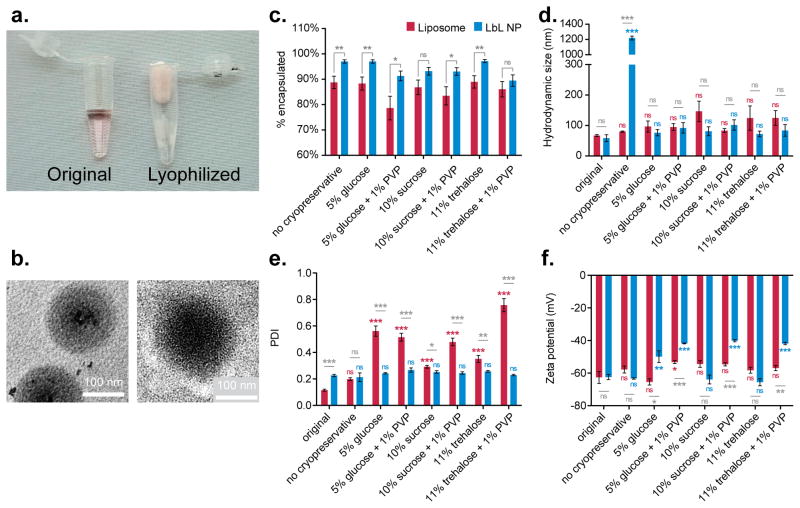Figure 7.
Liposomal-core layer-by-layer nanoparticles can be lyophilized and reconstituted for long-term storage. Doxorubicin-loaded liposomes were coated with two bilayers of poly(L-arginine) and dextran sulfate (Lipo-[PLA/DXS]2), using the TFF-method. (a) Lipo-[PLA/DXS]2 particles were lyophilized with different cryopreservatives. (b) TEM of particles before lyophilization (left panel) and after being reconstituted from freeze-dried powder (right panel). (c) LbL modified liposomes retained more drug than bare liposomes regardless of choice of cryoprotectant, though several protectants facilitate nearly 100% drug retention during storage and reconstitution. (d) The presence of cryoprotectants prevents aggregation upon LbL liposome reconstitution. (e) Reconstituted LbL liposomes exhibit lower polydispersity index than reconstituted bare liposomes, indicating improved uniformity. (f) Cryopreservation with 10% sucrose or 11% trehalose prevented decreases in the zeta potential of LbL liposomes. Size and polydispersity data were acquired by dynamic light scattering, and zeta potential data was measured using laser Doppler electrophoresis. Error bars represent standard deviation of three technical replicates.

